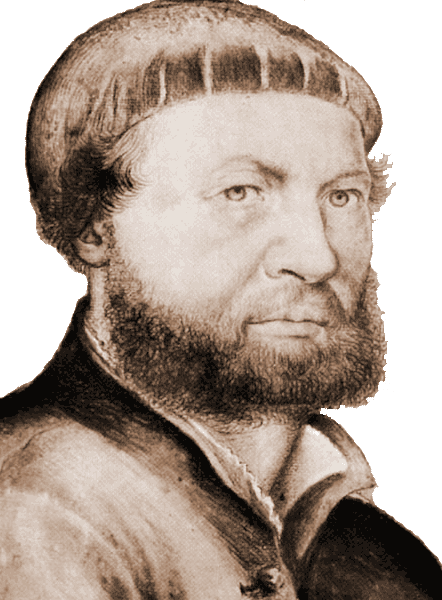







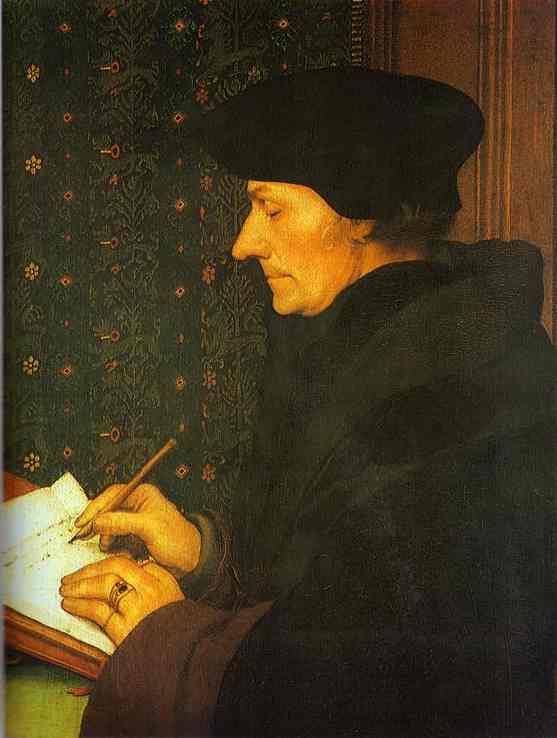
Holbein's greatness is demonstrated in this fine portrait not only in its technical mastery but also in its comprehension and presentation of the salient features of the subject's personality and activity. The scale of Erasmus's bulk within the picture space is prodigious; previously, scholars had been portrayed in book-lined studies, surrounded by the tools of their trade, musing as does Saint Jerome in Durer's woodcut of 1514, complete with shaggy lion.
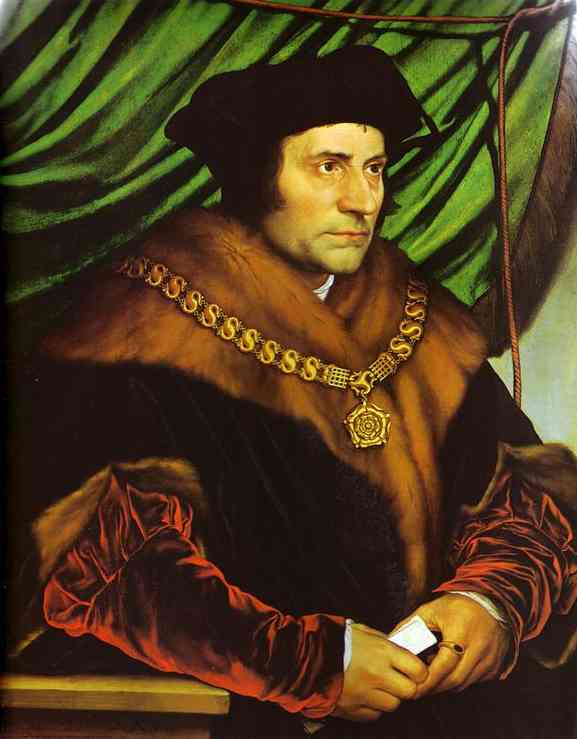
Along with Colet and Linacre, More was one of the moving spirits of the revival of learning and letters in the early years of Henry VIII's reign. The King himself seemed to presage a new civilized age and was keen to attract foreign artists and intellectuals to embellish his extrovert court; Erasmus himself was tempted to stay in England but finally refrained.
Holbein presents the public figure, robed in authority (for all his saintly reputation More was ferocious enough to condemn heretics to be burnt). The determined severity of countenance betrays little of the retiring scholar, although this is suggested in the figure's slight stoop. More was certainly concerned with the impression he made, insisting on having the flamboyant cuffs on his official costume replaced by ascetic plain ones.
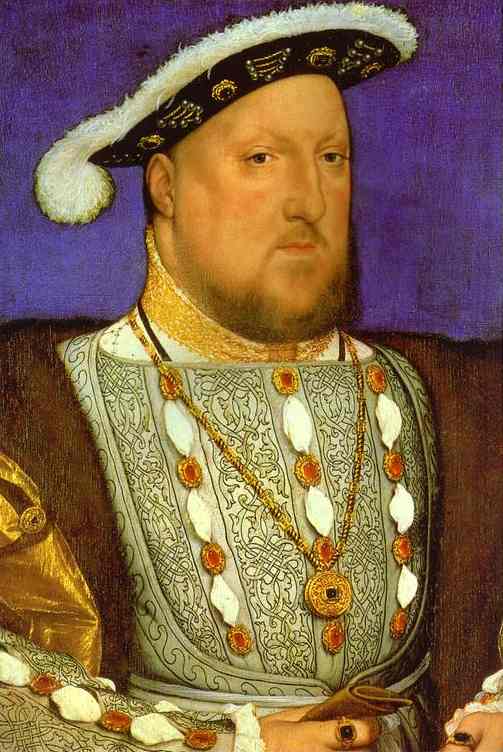
This is the quintessential image of the overbearing and tyrannous monarch, from the year the dissolution of the monasteries (and the consequent appropriation of their wealth for the Crown and its servants) was instigated. Holbein depicts the King as 'face value', without flattery, emphasizing the small, humourless eyes and mouth, the curiously flat cheeks and chin. Henry's bulky and capricious authority haunts the work despite its small size. Its condensation of magnificence run riot here takes the form of real gold used in the chain, jewelry and collar.
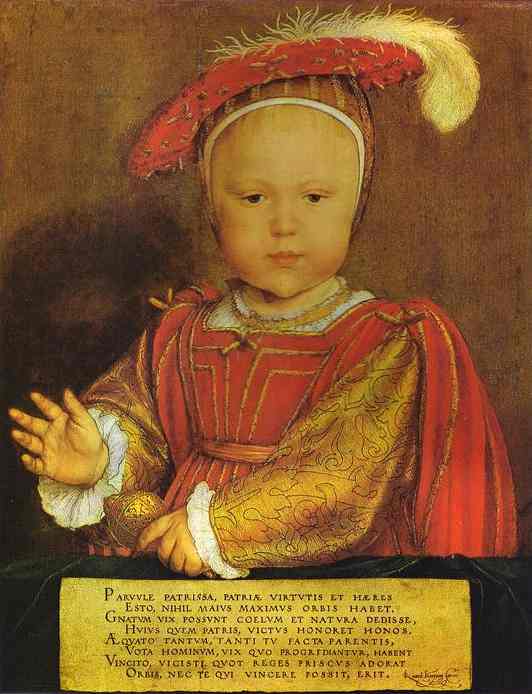
Embellished with verses by court poet Richard Morysin, exhorting the prince to surpass his father's achievement, this portrait is imbued with sad irony; this apparently healthy-looking child would die of tuberculosis at sixteen.
The baby prince looks considerably more mature than his two years would warrant and ... his pose echoes the regal authority of his father.